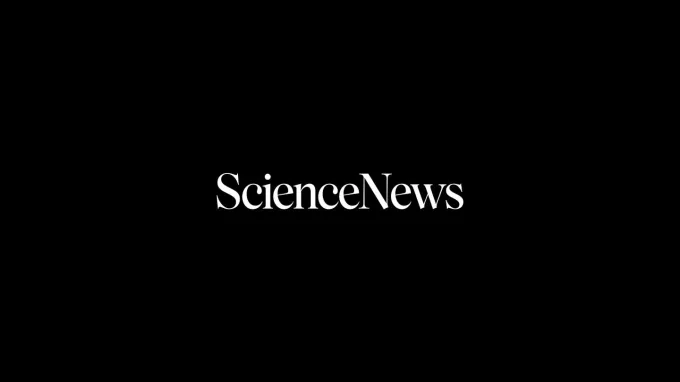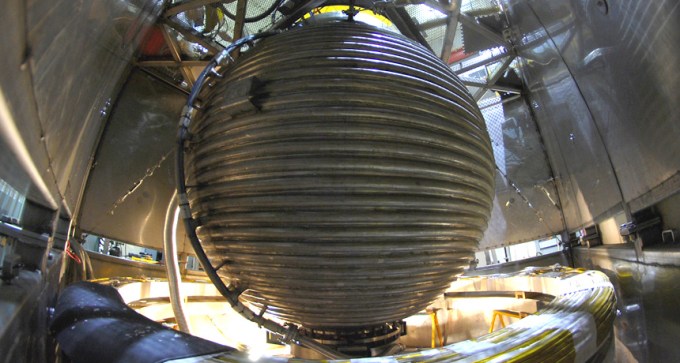Science News Magazine: Current Issue
Vol. 183 No. #10
Trustworthy journalism comes at a price.
Scientists and journalists share a core belief in questioning, observing and verifying to reach the truth. Science News reports on crucial research and discovery across science disciplines. We need your financial support to make it happen – every contribution makes a difference.
More Stories from the May 18, 2013 issue
-
 Physics
PhysicsSound cloaks enter the third dimension
Concept could lead to sonar-defeating submarines or noise-cancelling highway barriers.
By Andrew Grant -
 Life
LifeMolecule in meat may increase heart disease risk
Gut bacteria transform compound into artery hardener.
By Meghan Rosen -
 Health & Medicine
Health & MedicineOvarian cancer drug candidate passes early clinical test
An experimental medicine that uses a seek-and-destroy design to kill tumor cells may help some patients who face a recurrence.
By Nathan Seppa -
 Life
LifeA giant tortoise by any other name
Long, heated battle ends with a moniker for the Indian Ocean reptile.
By Susan Milius -
 Life
LifeNew technique gives see-through view into mouse brains
Replacing fatty molecules turns organs transparent, allowing study of structure and function at the same time.
-
 Humans
HumansPottery cooked from the start
Japanese sites yield late Stone Age evidence of people heating fish in ceramic vessels.
By Bruce Bower -
 Physics
PhysicsLight journeys unimpeded along material’s surface
A topological insulator for photons, exotic etched glass could improve optics-based communications.
By Andrew Grant -
 Health & Medicine
Health & MedicineMental puzzles underlie music’s delight
MRI reveals brain’s processing, and its pleasure, when a person listens to an enjoyable new tune.
By Meghan Rosen -
 Humans
HumansArdi’s kind had a skull fit for a hominid
Study of reconstructed skull section puts 4.4-million-year-old species in human evolutionary family.
By Bruce Bower -
 Anthropology
AnthropologyAmerican Association of Physical Anthropologists meeting
Perhaps the oldest swatch of hominid skin yet found and –tzi the iceman’s Neandertal genetics are among the highlights from the physical anthropology meeting.
By Bruce Bower -
 Cosmology
CosmologyDark matter detector reports hints of WIMPs
Experiment hundreds of meters underground detects three candidate signs of dark matter, though physicists are cautious about the finding.
By Andrew Grant -
 Health & Medicine
Health & MedicineBioengineered kidney transplanted into rat
Cleansed of cells and repopulated anew, bioengineered organ successfully produces urine.
By Nathan Seppa -
 Health & Medicine
Health & MedicineColic in infancy linked to migraines later in childhood
No tie found between colicky babies and later tension headaches.
By Nathan Seppa -
 Life
LifeCoelacanth is not closest fishy relative of terrestrial animals
Genes of “living fossil” do reveal changes needed to live on dry land.
-
 Life
LifeBats are 3-D cartographers
Special cells in the mammal’s brain chart its path as it flies.
By Meghan Rosen -
 Astronomy
AstronomyMost Earthlike planets yet seen bring Kepler closer to its holy grail
Space telescope finds globes that, compared with our world, are slightly larger and orbit a smaller star.
By Andrew Grant -
 Space
SpaceAmerican Physical Society meeting
A supernova’s remnants possibly showing up in fossils and an explanation for the Crab Nebula are among highlights from the physics meeting.
By Andrew Grant -
 Earth
EarthYangtze’s age revealed
Geologists narrow window on time of the Chinese river’s origin to 23-36 million years ago.
By Erin Wayman -
 Earth
EarthRemnants of Earth’s crust survive in the planet’s interior
A slab stayed unperturbed in the mantle for billions of years before resurfacing, sulfur measurements suggest.
By Erin Wayman -
 Space
SpaceComet’s water still hanging around on Jupiter
Shoemaker-Levy 9 supplied almost all of aqueous part of the planet's upper atmosphere.
By Andrew Grant -

-

SN Online
GENES & CELLS See a roundup of some of the latest discoveries about China’s H7N9 virus in “ New bird flu claims more victims .” ENVIRONMENT Lake Erie is loaded with tiny pieces of plastic containing toxic pollutants. Read “Puny plastic particles mar Lake Erie’s waters.” HUMANS Male attractiveness relies on a combination of body […]
By Science News -

-
 Science & Society
Science & SocietyA Renaissance Globemaker’s Toolbox
Johannes Schöner and the Revolution of Modern Science 1474-1550 by John W. Hessler.
By Science News -
 Science & Society
Science & SocietyBetween Man and Beast
An Unlikely Explorer, the Evolution Debates, and the African Adventure that Took the Victorian World by Storm by Monte Reel.
By Science News -

-
 Anthropology
AnthropologyPaleofantasy
What Evolution Really Tells Us about Sex, Diet, and How We Live by Marlene Zuk.
By Erin Wayman -

-
 Animals
AnimalsEvolutionary enigmas
Comb jelly genetics suggest a radical redrawing of the tree of life.
By Amy Maxmen -
 Earth
EarthSpinning the Core
Laboratory dynamos attempt to generate magnetic fields the way planets and stars do.
-

Letters to the editor
Ethics of humanized mice The recent stories “Human cells rev up mouse brains” (SN: 4/6/13, p. 16) and “Of mice and man” (SN: 3/23/13, p. 22) drove home to me that human-animal hybrids are now reality. In science fiction stories with such hybrids, a big part of the plot is the resultant ethical gray area: […]
By Science News -

Whistling noises give news from atmosphere
Science Past from the issue of May 18, 1963.
By Science News -
 Neuroscience
NeurosciencePieces of Light
How the New Science of Memory Illuminates the Stories We Tell About Our Pasts by Charles Fernyhough.
By Science News
